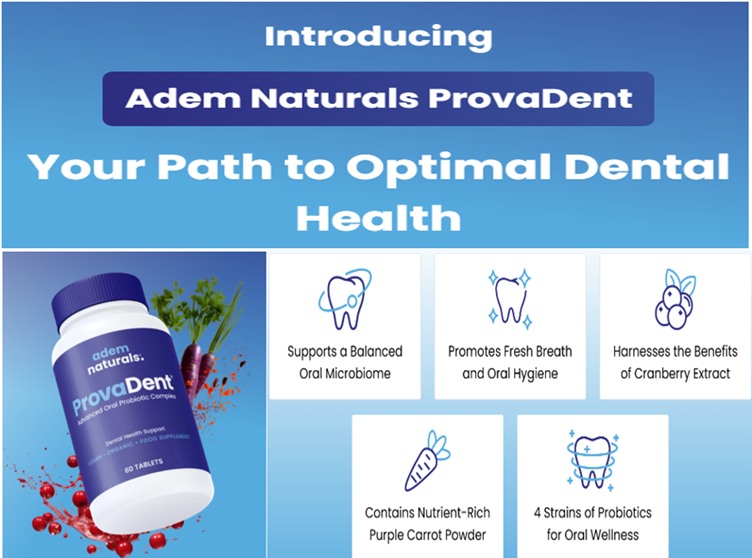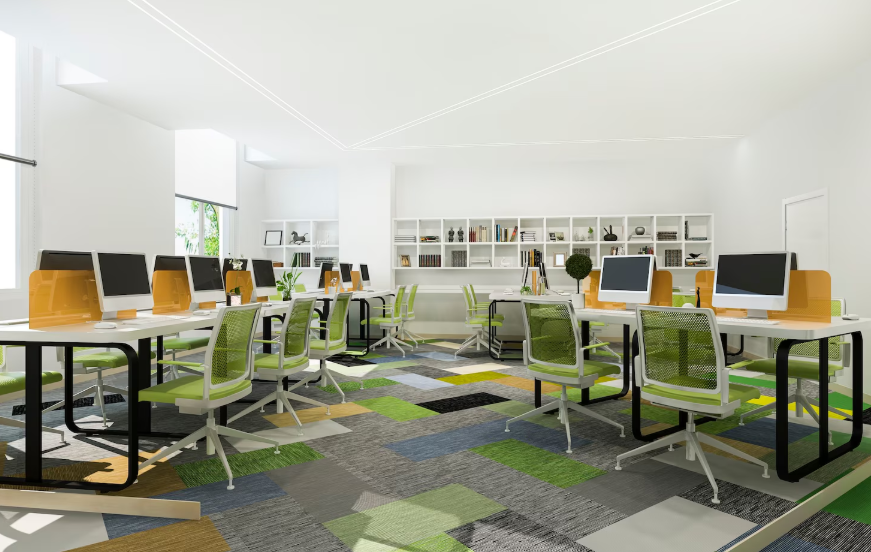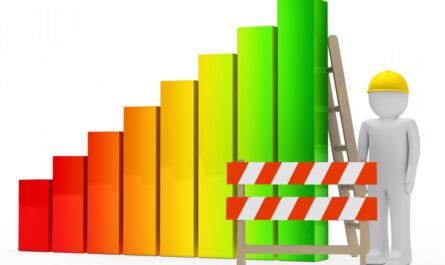Introduction
Have you ever walked into a workplace and immediately felt whether it was safe, organized, and efficient—or chaotic and stressful? That’s the hidden power of workplace design. It’s not just about how things look; it’s about how people move, interact, and perform in a space. A well-designed workplace doesn’t just enhance productivity—it can also prevent accidents, reduce injuries, and create a healthier environment for employees.
In this article, we’ll dive deep into how improving safety and productivity through workplace design works in real-world settings. Whether you’re a safety manager, HR professional, factory owner, or simply someone passionate about creating better workplaces, this guide will give you practical insights you can apply.
Why Workplace Design Matters
When we think of workplace improvements, most people jump to new technology, stricter policies, or better training. While those are important, the design of the workplace itself often gets overlooked. Yet, the layout, lighting, ventilation, furniture, and workflow pathways directly influence both safety and productivity.
Here’s why it matters:
- Safety: Poorly designed workplaces lead to accidents like slips, trips, falls, and ergonomic injuries. A simple design adjustment can prevent costly accidents.
- Productivity: Employees spend less time moving around unnecessarily, experience fewer distractions, and work more comfortably in a well-planned environment.
- Morale: People feel valued when their health and comfort are prioritized, leading to better engagement and job satisfaction.
The Link Between Safety and Productivity
It’s a common misconception that focusing on safety slows down productivity. In reality, safety and productivity go hand in hand. A workplace with frequent accidents leads to downtime, higher insurance costs, and stressed employees. Conversely, a safe environment ensures smoother operations, less absenteeism, and more consistent output.
Think of it like this: a safe workplace is a productive workplace.
Key Elements of Workplace Design That Impact Safety and Productivity
Let’s explore some of the most crucial design elements that influence both safety and efficiency.
1. Ergonomic Workstations
Poor ergonomics is one of the biggest causes of workplace injuries—especially musculoskeletal disorders (MSDs). Adjustable chairs, desks, and equipment placement can dramatically reduce fatigue and long-term injuries.
- Provide adjustable seating with lumbar support.
- Position computer screens at eye level to prevent neck strain.
- Ensure tools and equipment are within easy reach to reduce awkward stretching.
2. Lighting
Lighting impacts not only visibility and accident prevention but also mood and alertness.
- Use natural lighting wherever possible—it boosts morale and reduces fatigue.
- Install adequate task lighting in high-risk areas like workshops and labs.
- Avoid glare and overly bright fluorescent lights, which cause eye strain.
3. Ventilation and Air Quality
Poor ventilation leads to drowsiness, headaches, and long-term health issues. In industrial settings, it can also cause exposure risks.
- Install proper HVAC systems for clean airflow.
- Use localized exhausts in areas where dust, fumes, or chemicals are present.
- Incorporate plants and natural ventilation to improve indoor air quality.
4. Noise Control
Constant loud noise reduces concentration and increases stress levels, apart from causing hearing loss.
- Use soundproofing panels in offices.
- Provide ear protection in noisy industrial environments.
- Separate noisy machinery from quieter workstations.
5. Clear Workflow Pathways
Cluttered pathways are a major cause of slips, trips, and falls.
- Mark pedestrian walkways clearly in factories.
- Keep aisles free of cables, equipment, and storage boxes.
- Design one-way routes for forklifts and transport vehicles inside plants.
6. Safe Storage Solutions
Improper storage leads to falling objects, injuries, and wasted time searching for tools.
- Use labeled shelves and bins for organized storage.
- Place heavy items at waist level to reduce lifting risks.
- Provide lockable storage for hazardous materials.
7. Break Areas and Rest Zones
Productivity is not about working nonstop; it’s about working smart. Well-designed break areas improve recovery and reduce fatigue-related accidents.
- Provide comfortable seating and natural lighting in rest areas.
- Separate rest zones from noisy production areas.
- Encourage short, regular breaks for high-concentration tasks.
Psychological Impact of Workplace Design
Safety isn’t just physical—it’s also psychological. Stress, anxiety, and poor mental health can reduce alertness and increase accident risks. A thoughtful design can support employee well-being:
- Colors: Use calming colors like blue and green in office spaces.
- Openness: Open layouts encourage collaboration, while quiet zones support focus.
- Biophilic Design: Adding plants, natural textures, and outdoor views reduces stress and improves creativity.
Technology in Workplace Design
Modern technology has revolutionized workplace safety and productivity. Some innovations include:
- Smart Sensors: Detect hazardous gas leaks or unsafe conditions.
- Wearables: Track employee fatigue and posture to prevent injuries.
- Automation: Robots handle repetitive or dangerous tasks, reducing human risk.
- Digital Twin Models: Virtual simulations help design safer, more efficient layouts before physical changes are made.
Case Studies: Real-World Examples
Case Study 1: Manufacturing Plant Redesign
A large automotive factory redesigned its workflow by separating pedestrian paths from forklift lanes. Result? A 40% reduction in workplace accidents and a 15% boost in productivity due to smoother traffic flow.
Case Study 2: Office Ergonomic Program
A corporate office invested in ergonomic chairs, sit-stand desks, and better lighting. Within six months, employee complaints about back pain dropped by 60%, and overall productivity improved by 12%.
Practical Tips for Improving Workplace Design
Here are some actionable steps any organization can take:
- Conduct a Safety Audit – Identify design-related risks like poor lighting or cluttered walkways.
- Engage Employees – Ask workers for feedback on design flaws—they notice issues management might miss.
- Apply 5S Methodology – Sort, Set in order, Shine, Standardize, and Sustain to keep workplaces organized.
- Invest in Ergonomics – Provide training along with ergonomic equipment.
- Prioritize Flexibility – Design spaces that can adapt to future needs instead of rigid layouts.
Challenges in Workplace Design
While the benefits are clear, organizations often face hurdles such as:
- Cost: Redesigning a workspace can be expensive upfront.
- Resistance to Change: Employees may resist new layouts or systems.
- Space Limitations: Older buildings may not support modern redesign easily.
However, the long-term gains outweigh the challenges. Fewer accidents, higher productivity, and improved morale ultimately save more money than they cost.
Future of Workplace Design
Workplace design is constantly evolving. Future trends include:
- Hybrid Workspaces: Blending remote and in-office setups.
- AI-Driven Layouts: Using AI to optimize workflow and safety.
- Green Design: Energy-efficient and sustainable designs that promote well-being.
- Human-Centric Design: Spaces tailored around comfort, inclusivity, and accessibility.
Conclusion
Improving safety and productivity through workplace design is not just a nice-to-have—it’s a business necessity. The way we design our work environments directly impacts how safe, efficient, and motivated people feel every day.
By focusing on ergonomics, lighting, ventilation, workflow, and modern technology, organizations can create a workplace that doesn’t just function—it thrives. Remember, a safer workplace doesn’t just protect employees; it also fuels long-term success.
So, the next time you step into your workplace, look around and ask yourself: Does this design protect people and empower them to do their best work?
If the answer is no, maybe it’s time for a redesign.
✅ Key Takeaway: Safety and productivity are two sides of the same coin. A thoughtful workplace design ensures employees feel safe, comfortable, and motivated—leading to fewer accidents and greater efficiency.
🔁 Readers also enjoyed these blog posts:
- Safety Management’s Role: The Unsung Hero Behind Every Successful Organization
- Safety Management and Its Responsibilities: Protecting People, Preventing Hazards, and Promoting a Culture of Care
- Benchmarking for Safety Performance: A Key to Continuous Improvement
“Start Your Website Journey Today – Exclusive Hostinger Discounts!”

Turn Any Idea into Viral,
Jaw-Dropping AI Videos in Seconds!










